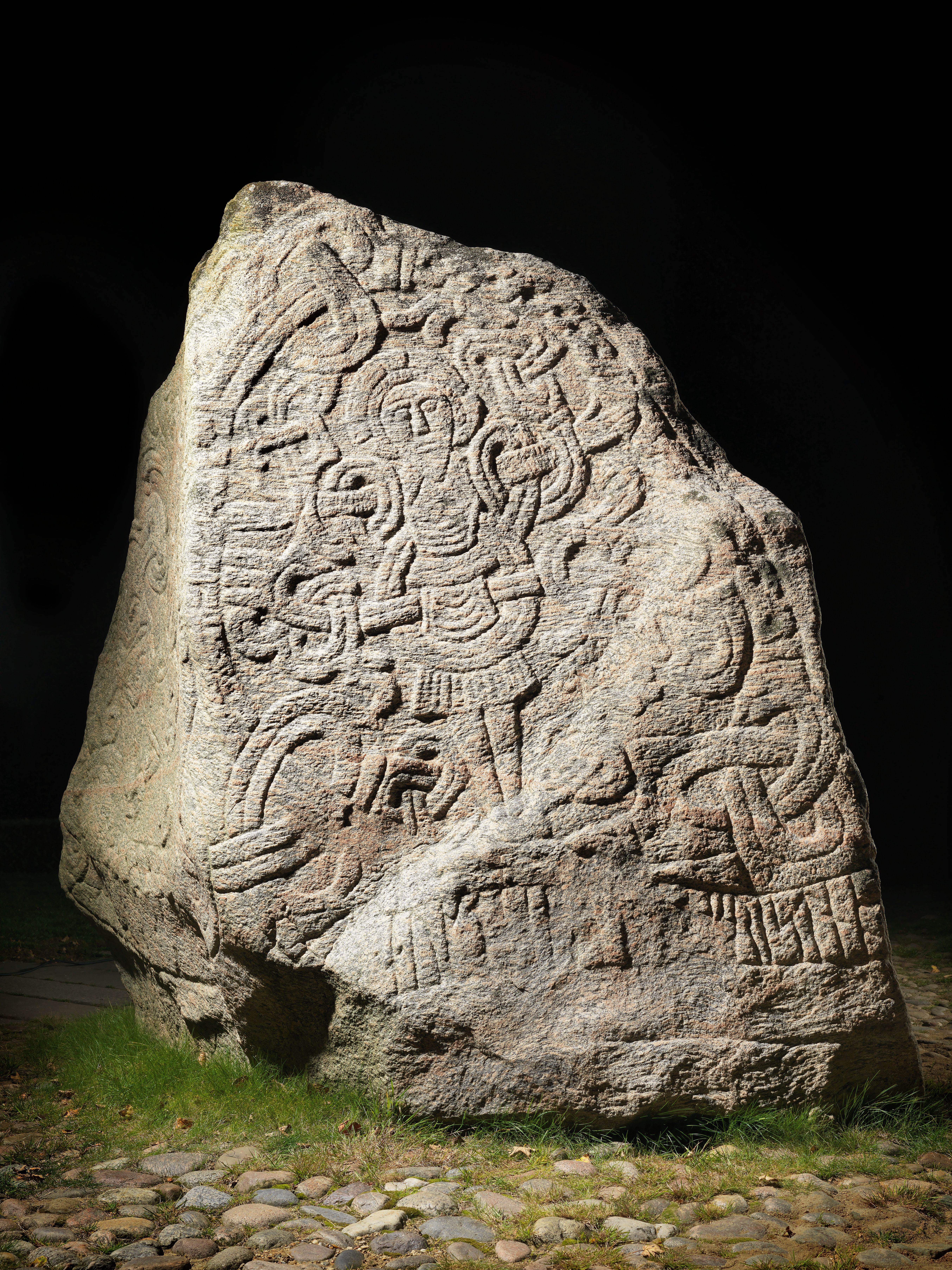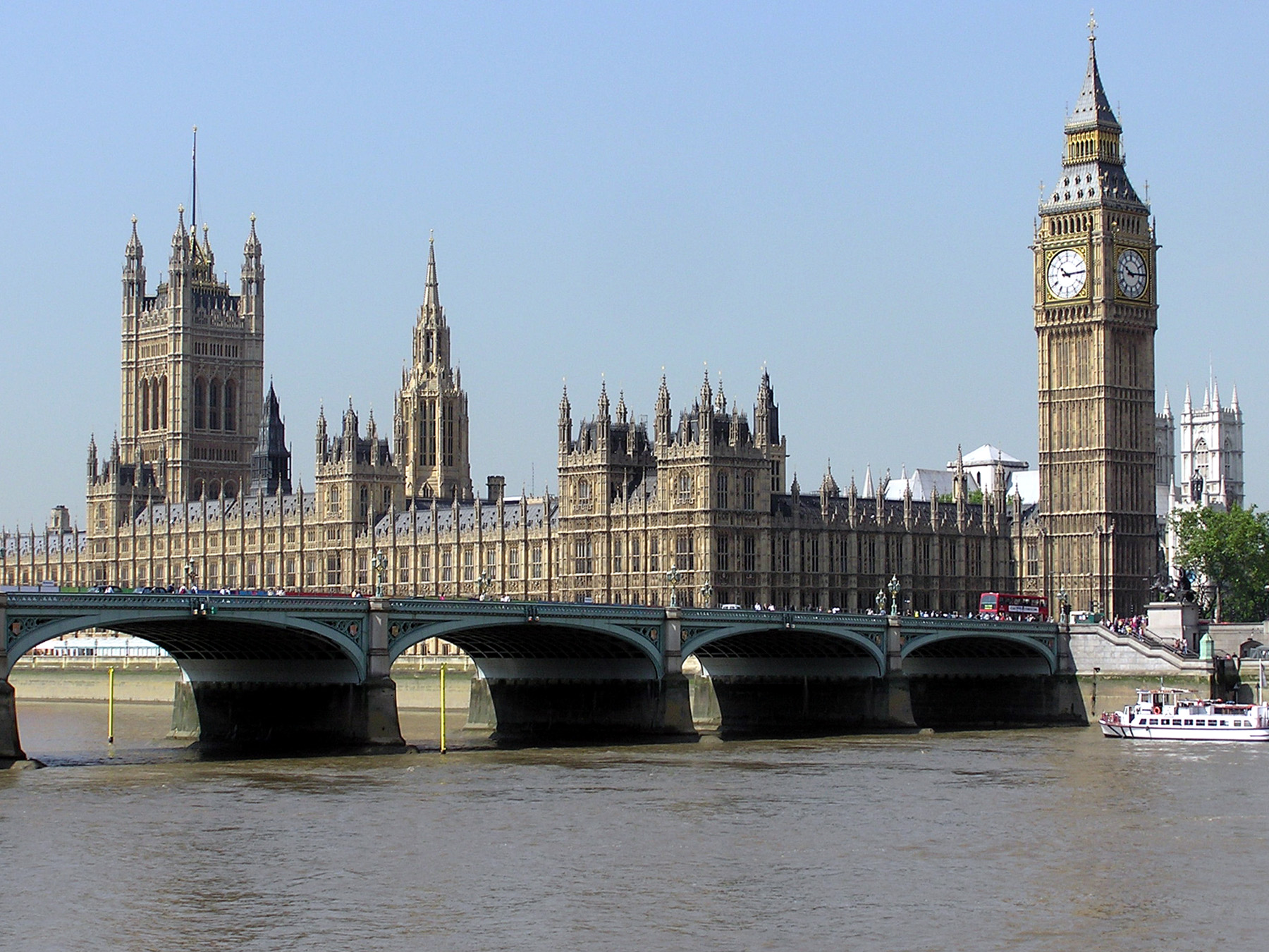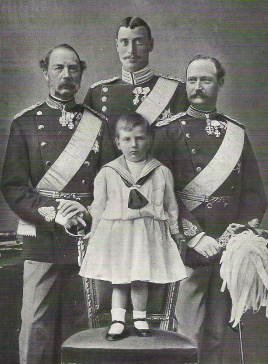|
King Christian X
Christian X (; 26 September 1870 – 20 April 1947) was King of Denmark from 1912 until his death in 1947, and the only King of Iceland as Kristján X, holding the title as a result of the personal union between Denmark and independent Iceland between 1918 and 1944. He was a member of the House of Glücksburg, a branch of the House of Oldenburg, and the first monarch since King Frederick VII born into the Danish royal family; both his father and his grandfather were born as princes of a ducal family from Schleswig. Among his siblings was King Haakon VII of Norway. His son became Frederick IX of Denmark. Among his cousins were King George V of the United Kingdom, Emperor Nicholas II of Russia, and King Constantine I of Greece, while Queen Maud of Norway, was both his cousin and sister-in-law. His character has been described as authoritarian and he strongly stressed the importance of royal dignity and power. His reluctance to fully embrace democracy resulted in the ... [...More Info...] [...Related Items...] OR: [Wikipedia] [Google] [Baidu] |
King Of Denmark
The monarchy of Denmark is a constitutional political system, institution and a historic office of the Kingdom of Denmark. The Kingdom includes Denmark proper and the autonomous administrative division, autonomous territories of the Faroe Islands and Greenland. The Kingdom of Denmark was already consolidated in the 8th century, whose rulers are consistently referred to in Franks, Frankish sources (and in some late Frisians, Frisian sources) as "kings" (). Under the rule of King Gudfred in 804 the Kingdom may have included all the major Lands of Denmark, provinces of medieval Denmark. The current unified Kingdom of Denmark was founded or re-united by the Vikings, Viking kings Gorm the Old and Harald Bluetooth in the 10th century. Originally an elective monarchy, it became hereditary monarchy, hereditary only in the 17th century during the reign of Frederick III of Denmark, Frederick III. A decisive transition to a constitutional monarchy occurred in 1849 with the writing of th ... [...More Info...] [...Related Items...] OR: [Wikipedia] [Google] [Baidu] |
Personal Union
A personal union is a combination of two or more monarchical states that have the same monarch while their boundaries, laws, and interests remain distinct. A real union, by contrast, involves the constituent states being to some extent interlinked, such as by sharing some limited governmental institutions. Unlike a personal union, in a federation or a unitary state, a central (federal) government spanning all member states exists, with the degree of self-governance distinguishing the two. The ruler in a personal union does not need to be a hereditary monarch. The term was coined by German jurist Johann Stephan Pütter, introducing it into ''Elementa iuris publici germanici'' (Elements of German Public Law) of 1760. Personal unions can arise for several reasons, such as: * inheritance through a dynastic union, e.g. Louis X of France inherited France France, officially the French Republic, is a country located primarily in Western Europe. Overseas France, Its ov ... [...More Info...] [...Related Items...] OR: [Wikipedia] [Google] [Baidu] |
Parliamentarianism
A parliamentary system, or parliamentary democracy, is a form of government where the head of government (chief executive) derives their democratic legitimacy from their ability to command the support ("confidence") of a majority of the legislature, to which they are held accountable. This head of government is usually, but not always, distinct from a ceremonial head of state. This is in contrast to a presidential system, which features a president who is not fully accountable to the legislature, and cannot be replaced by a simple majority vote. Countries with parliamentary systems may be constitutional monarchies, where a monarch is the head of state while the head of government is almost always a member of parliament, or parliamentary republics, where a mostly ceremonial president is the head of state while the head of government is from the legislature. In a few countries, the head of government is also head of state but is elected by the legislature. In bicameral parliam ... [...More Info...] [...Related Items...] OR: [Wikipedia] [Google] [Baidu] |
Zahle II Cabinet
The Second Zahle Cabinet was the government of Denmark from 21 June 1913 to 29 March 1920. It replaced the Berntsen Cabinet, and was dismissed by Christian X leading to the Easter Crisis of 1920. History It was the government which led the country through the First World War World War I or the First World War (28 July 1914 – 11 November 1918), also known as the Great War, was a World war, global conflict between two coalitions: the Allies of World War I, Allies (or Entente) and the Central Powers. Fighting to ... and gave women and servants the right to vote. List of ministers The cabinet consisted of these ministers: References {{Cabinets of Denmark 1913 establishments in Denmark 1920 disestablishments in Denmark Zahle II ... [...More Info...] [...Related Items...] OR: [Wikipedia] [Google] [Baidu] |
Easter Crisis Of 1920
The Easter Crisis () was a constitutional crisis in Denmark around Easter in 1920. It was a significant event in the development of constitutional monarchy in Denmark. It began with the dismissal of the elected government by the reigning monarch, King Christian X, a reserve power which was granted to him by the Danish constitution, because he thought that the government did not try to reclaim enough land from Germany in Schleswig. After protests, the King agreed to install a caretaker government who could hold a general election, and no Danish monarch has since interfered in politics. Long-running Schleswig-Holstein question The immediate cause was a conflict between the king and the cabinet over the reunification with Denmark of Schleswig, a former Danish fiefdom which had been lost to Prussia during the Second War of Schleswig. Danish claims to the region persisted to the end of World War I, at which time the defeat of the Germans made it possible to resolve the dispute. Accor ... [...More Info...] [...Related Items...] OR: [Wikipedia] [Google] [Baidu] |
Maud Of Wales
Maud of Wales (Maud Charlotte Mary Victoria; 26 November 1869 – 20 November 1938) was Queen of Norway as the wife of King Haakon VII. The youngest daughter of King Edward VII and Queen Alexandra of the United Kingdom, she was known as Princess Maud of Wales before her marriage, as her father was the Prince of Wales at the time. Early life and education Maud was born on 26 November 1869 at Marlborough House, London. She was the third daughter and fifth child of Albert Edward, Prince of Wales, and Alexandra, Princess of Wales. Albert Edward was the eldest son of Queen Victoria, and Alexandra was the eldest daughter of Christian IX of Denmark. Maud was christened "Maud Charlotte Mary Victoria" at Marlborough House by John Jackson, Bishop of London, on 24 December 1869. Her godparents were her paternal uncle Prince Leopold, for whom the Duke of Cambridge stood proxy; Prince Frederick William of Hesse-Kassel, for whom Prince Francis of Teck stood proxy; Count Gleiche ... [...More Info...] [...Related Items...] OR: [Wikipedia] [Google] [Baidu] |
Constantine I Of Greece
Constantine I (, Romanization, romanized: ''Konstantínos I''; – 11 January 1923) was King of Greece from 18 March 1913 to 11 June 1917 and again from 19 December 1920 to 27 September 1922. He was commander-in-chief of the Hellenic Army during the unsuccessful Greco-Turkish War (1897), Greco-Turkish War of 1897 and led the Greek forces during the successful Balkan Wars of 1912–1913, in which Greece expanded to include Thessaloniki, doubling in area and population. The eldest son of George I of Greece, he succeeded to the throne following his father's assassination in 1913. Constantine's disagreement with Prime Minister Eleftherios Venizelos over whether Greece should enter World War I led to the National Schism. Under Allied duress, the country was essentially split between the pro-Venizelos North and the royalist South, ushering in a protracted civil war. He forced Venizelos to resign twice, but in 1917 Constantine left Greece, after threats by the Allies of World War I, ... [...More Info...] [...Related Items...] OR: [Wikipedia] [Google] [Baidu] |
Nicholas II Of Russia
Nicholas II (Nikolai Alexandrovich Romanov; 186817 July 1918) or Nikolai II was the last reigning Emperor of Russia, Congress Poland, King of Congress Poland, and Grand Duke of Finland from 1 November 1894 until Abdication of Nicholas II, his abdication on 15 March 1917. He Wedding of Nicholas II and Alexandra Feodorovna, married Alexandra Feodorovna (Alix of Hesse), Alix of Hesse (later Alexandra Feodorovna) and had five children: the OTMA sisters – Grand Duchess Olga Nikolaevna of Russia, Olga, born in 1895, Grand Duchess Tatiana Nikolaevna of Russia, Tatiana, born in 1897, Grand Duchess Maria Nikolaevna of Russia, Maria, born in 1899, and Grand Duchess Anastasia Nikolaevna of Russia, Anastasia, born in 1901 — and the tsesarevich Alexei Nikolaevich, Tsarevich of Russia, Alexei Nikolaevich, who was born in 1904, three years after the birth of their last daughter, Anastasia. During his reign, Nicholas gave support to the economic and political reforms promoted by his prim ... [...More Info...] [...Related Items...] OR: [Wikipedia] [Google] [Baidu] |
George V
George V (George Frederick Ernest Albert; 3 June 1865 – 20 January 1936) was King of the United Kingdom and the British Dominions, and Emperor of India, from 6 May 1910 until Death and state funeral of George V, his death in 1936. George was born during the reign of his paternal grandmother, Queen Victoria, as the second son of the Prince and Princess of Wales (later King Edward VII and Queen Alexandra). He was third in the line of succession to the British throne behind his father and his elder brother, Prince Albert Victor. From 1877 to 1892, George served in the Royal Navy, until his elder brother's unexpected death in January 1892 put him directly in line for the throne. The next year Wedding of Prince George and Princess Victoria Mary, George married his brother's former fiancée, Princess Victoria Mary of Teck, and they had six children. When Death of Queen Victoria, Queen Victoria died in 1901, George's father ascended the throne as Edward VII, and George was created ... [...More Info...] [...Related Items...] OR: [Wikipedia] [Google] [Baidu] |
Frederick IX Of Denmark
Frederik IX (Christian Frederik Franz Michael Carl Valdemar Georg; 11 March 1899 – 14 January 1972) was King of Denmark from 1947 to 1972. Frederik was born into the House of Glücksburg during the reign of his great-grandfather King Christian IX. He was the first child of Prince Christian of Denmark and Princess Alexandrine of Mecklenburg-Schwerin (later King Christian X and Queen Alexandrine). He became crown prince when his father succeeded as king in 1912. As a young man, he was educated at the Royal Danish Naval Academy. In 1935, he married Princess Ingrid of Sweden. They had three daughters: Margrethe, Benedikte and Anne-Marie. During Nazi Germany's occupation of Denmark, Frederik acted as regent on behalf of his father from 1942 until 1943. Frederik became king on his father's death in April 1947. During Frederik's reign, Danish society changed rapidly, the welfare state was expanded and, as a consequence of the booming economy of the 1960s, women entered ... [...More Info...] [...Related Items...] OR: [Wikipedia] [Google] [Baidu] |
Haakon VII Of Norway
Haakon VII (; 3 August 187221 September 1957) was King of Norway from 18 November 1905 until his death in 1957. The future Haakon VII was born in Copenhagen as Prince Carl of Denmark. He was the second son of the Crown Prince and Crown Princess of Denmark (later King Frederick VIII and Queen Louise). Prince Carl was educated at the Royal Danish Naval Academy and served in the Royal Danish Navy. After the 1905 dissolution of the union between Sweden and Norway, he was offered the Norwegian crown. Following a November plebiscite, he accepted the offer and was formally elected king of Norway by the Storting. He took the Old Norse name ''Haakon'' and ascended the throne as Haakon VII, becoming the first independent Norwegian monarch since Olaf II in 1387. As king, Haakon gained much sympathy from the Norwegian people. Although the Constitution of Norway vests the King with considerable executive powers, in practice Haakon confined himself to a representative and ceremonial rol ... [...More Info...] [...Related Items...] OR: [Wikipedia] [Google] [Baidu] |
Duchy Of Schleswig
The Duchy of Schleswig (; ; ; ; ; ) was a duchy in Southern Jutland () covering the area between about 60 km (35 miles) north and 70 km (45 mi) south of the current border between Germany and Denmark. The territory has been divided between the two countries since 1920, with South Jutland County, Northern Schleswig in Denmark and Southern Schleswig in Germany. The region is also called Sleswick in English. Unlike Duchy of Holstein, Holstein and Saxe-Lauenburg, Lauenburg, Schleswig was never a part of the German Confederation. Schleswig was instead a fief of Denmark, and its inhabitants spoke Danish, German, and North Frisian. Both Danish and German National Liberals wanted Schleswig to be part of a Danish or German national state in the 19th century. A German uprising in March 1848 caused the First Schleswig War which ended in 1852. The Second Schleswig War (1864) ended with the three duchies being governed jointly by Austrian Empire, Austria and Prussia. In 1866 ... [...More Info...] [...Related Items...] OR: [Wikipedia] [Google] [Baidu] |










